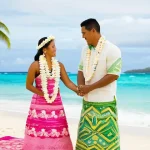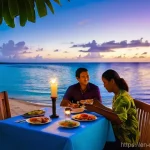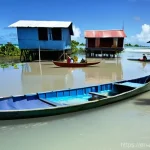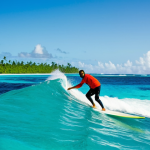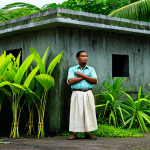If you’ve ever dreamed of remote island getaways, you might imagine tranquil beaches and endless sunshine. But step beyond the tourist brochures into the heart of the Marshall Islands, and you’ll find a nation with a truly captivating story, one forged through a fascinating journey to independence and shaped by a unique political landscape.
I remember first learning about their path to self-governance in 1979 and achieving full sovereignty in 1986 under that intriguing Compact of Free Association with the U.S.
– it immediately piqued my curiosity about how a parliamentary republic thrives amidst such a rich cultural heritage. Their political system, where traditional chiefs still hold an advisory role alongside a democratically elected Nitijela, is a testament to blending ancient wisdom with modern governance.
It’s a dynamic interplay that’s faced its share of hurdles, and I bet you’ll be surprised by some of the details. Let’s get right into the specifics and uncover this incredible journey!
Beyond the Postcard: Unpacking the Marshallese Political Tapestry
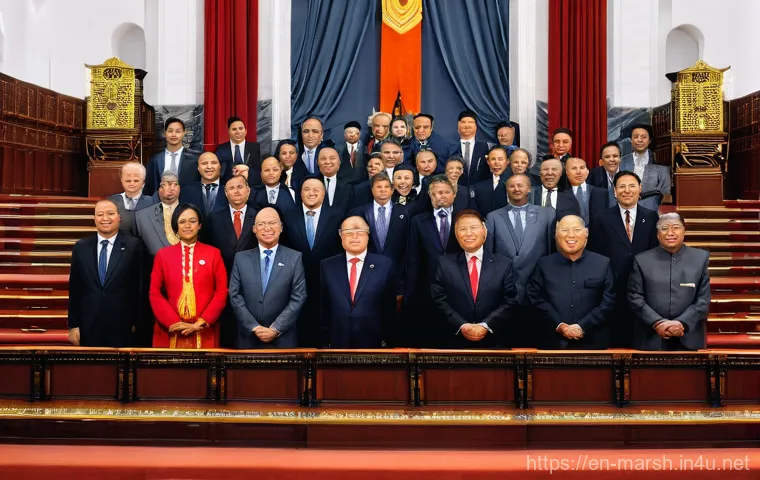
You know, whenever I used to think of remote island nations, my mind often conjured up images of endless beaches and tranquil lagoons. While the Marshall Islands certainly boasts that breathtaking beauty, delving into their political system has been an absolutely fascinating journey for me, revealing a depth and complexity far beyond any travel brochure. It’s like discovering a hidden layer to a place you thought you knew, and honestly, it’s far more compelling than just the pretty pictures. What really struck me, right from the get-go, was how they’ve managed to intricately weave traditional customs and leadership into a modern, democratic framework. It’s not just a superficial nod; it’s a living, breathing part of their governance, a blend that many larger, more established nations could learn a thing or two from. I remember thinking, “How do they make that work?” It requires a delicate balance, a profound respect for their heritage, and a forward-thinking approach to ensure stability and progress. It’s a testament to their resilience and their unwavering commitment to their identity, even as they navigate the challenges of the 21st century. This unique approach, I’ve found, isn’t without its complexities, but it undeniably forms the backbone of who they are as a sovereign nation.
A Glimpse into the Past: From Trust Territory to Self-Rule
Before they truly blossomed into the independent nation they are today, the Marshall Islands had a really interesting journey, marked by its time as part of the Trust Territory of the Pacific Islands, administered by the United States after World War II. For decades, they were under a different kind of guardianship, which shaped a lot of their foundational structures and political thought. I can only imagine the conversations and aspirations bubbling up during that period, the yearning for self-determination growing stronger with each passing year. The move towards self-governance in 1979 wasn’t just a political decision; it was a deeply personal one for the Marshallese people, a collective step towards reclaiming their destiny. It symbolized a shift from being administered to becoming administrators, from being guided to charting their own course. It’s a story of perseverance and a powerful reminder of what a community can achieve when united by a common goal of freedom.
The Pillars of Power: Executive, Legislative, and Judicial Branches
Like many modern democracies, the Republic of the Marshall Islands operates with a clear separation of powers, featuring executive, legislative, and judicial branches. What’s truly impressive, in my opinion, is how effectively they’ve adapted these Western-style governmental structures to fit their unique cultural context. The President, for instance, isn’t just a figurehead; they’re the head of both state and government, elected by the Nitijela, their parliament, from among its members. This parliamentary system creates a tight-knit relationship between the executive and legislative arms, fostering a sense of shared responsibility that I’ve observed in my research. The legislative branch, the Nitijela, is where the real debates and policy-making happen, with elected representatives bringing the voices of their constituents to the national stage. And of course, the judiciary stands as the guardian of their laws, ensuring justice and upholding the constitution. It’s a well-oiled machine, carefully designed to serve its people.
The Echoes of History: Forging a Nation’s Destiny
When you look at the Marshall Islands today, vibrant and independent, it’s easy to overlook the incredible historical journey that brought them to this point. But trust me, understanding their path to independence isn’t just about dates and treaties; it’s about appreciating the sheer determination of a people to carve out their own future. I’ve always been fascinated by how nations are born, and the Marshallese story is particularly inspiring because it wasn’t a sudden revolution but a deliberate, thoughtful progression towards self-rule. Imagine the pride, the hope, and yes, even the anxieties that must have permeated the discussions and decisions during those formative years. It’s a living history, still resonant in their national identity, and it teaches us so much about what it means to truly be sovereign.
The Path to Self-Governance: A Defining Moment
The year 1979 marks a pivotal moment in Marshallese history when they formally adopted their own constitution and achieved self-governance. This wasn’t just a bureaucratic change; it was a profound declaration of identity. I can almost picture the atmosphere of excitement and anticipation as the new constitution was established, laying down the fundamental principles for their future as an independent nation. It was a time of immense political creativity and strategic negotiation, as leaders worked tirelessly to craft a system that honored their cultural heritage while embracing modern democratic ideals. This period really set the stage for everything that followed, building a robust framework for their emerging nation. It’s a remarkable example of nation-building from the ground up, with the unique challenges of small island developing states always in the backdrop, yet overcome with unwavering spirit.
Sovereignty Achieved: The 1986 Milestone
The final step in their formal journey to full sovereignty came in 1986 with the implementation of the Compact of Free Association (COFA) with the United States. This agreement wasn’t just a piece of paper; it was the culmination of years of discussions and negotiations, formally recognizing the Marshall Islands as a fully sovereign and independent nation. For me, what’s so compelling about COFA is that it’s not a one-sided deal; it’s a unique partnership where the U.S. provides defense and certain financial assistance in exchange for strategic access. It’s a mutually beneficial relationship that reflects the trust and history built between the two nations. This moment in 1986 wasn’t merely the signing of a document; it was the joyful realization of a long-held dream for the Marshallese people, cementing their place on the global stage as a truly independent state. I often think about the national pride that must have swelled in every citizen that year.
Bridging Worlds: The Unique Role of Traditional Leadership
One of the most captivating aspects of the Marshallese political landscape, at least to my eyes, is the continued, deeply respected role of traditional leadership. In a world where so many modern governments have largely sidelined or ceremonialized their traditional structures, the Marshall Islands has genuinely embraced theirs, integrating them into the fabric of contemporary governance. It’s not just for show; these traditional leaders, particularly the Iroij (chiefs), hold significant sway, providing invaluable advice and guidance, especially on matters concerning land, custom, and cultural preservation. I remember discussing this with someone who had visited the islands, and they described how this blend creates a sense of continuity and rootedness that’s simply unmatched. It feels like a respectful nod to centuries of history, ensuring that ancient wisdom isn’t lost in the rush towards modernity. This balance, I believe, is a cornerstone of their societal stability and their strong sense of national identity, something truly admirable to witness.
Iroij: The Enduring Influence of Chiefs
The Iroij, or traditional chiefs, aren’t just historical figures; they are very much active and respected members of Marshallese society, exerting influence that transcends mere formality. Their role is particularly vital when it comes to land rights, which are intricately tied to traditional lineage and custom. Given that land is such a precious commodity on low-lying atolls, the wisdom and mediation of the Iroij are indispensable. I’ve learned that they act as custodians of ancestral lands and oral histories, and their decisions on such matters are often revered and followed, even in a modern legal context. This dual system, where traditional authority coexists with statutory law, can seem complex from an outside perspective, but it absolutely works for them. It ensures that cultural values and historical perspectives are always considered in decision-making, offering a vital link to their heritage.
Weaving Custom into Governance: A Living Tradition
It’s truly inspiring to see how traditional customs aren’t just observed but are actively woven into the very framework of Marshallese governance. This isn’t just about preserving old ways; it’s about recognizing the inherent wisdom and societal cohesion that these customs bring. For example, while the Nitijela handles legislative duties, the Council of Iroij, composed of traditional chiefs, serves as an advisory body, particularly on matters of customary law and traditional practices. This council ensures that any new legislation or policy fully considers and respects the cultural nuances and ancestral heritage of the islands. I’ve always felt that the best governance models are those that truly reflect the people they serve, and the Marshall Islands exemplifies this beautifully. They’ve found a way to honor their past while building for their future, creating a unique and stable political environment that truly embraces its roots.
Navigating the Waters: The Nitijela and Modern Governance
Steering the ship of state in a dynamic and ever-changing world requires a robust legislative body, and in the Marshall Islands, that role is admirably filled by the Nitijela, their unicameral parliament. This is where the real day-to-day work of governing happens, from drafting laws to debating national policies that affect every single Marshallese citizen. I find it fascinating how such a relatively small body – with its elected members representing different atolls and constituencies – manages to tackle complex issues ranging from climate change to economic development. It’s a testament to their dedication and the strength of their democratic institutions. When I think about it, the Nitijela isn’t just a political forum; it’s the heartbeat of their modern governance, a place where diverse voices come together to shape the nation’s future. The commitment to democratic principles is truly palpable here, providing a clear pathway for citizens to engage with their government.
The People’s Voice: Elections and Representation
In a parliamentary republic, elections are the ultimate expression of the people’s will, and in the Marshall Islands, this is no different. The members of the Nitijela are directly elected by the citizens, ensuring that their representatives are accountable to their constituencies. I’ve always believed that strong representation is key to a healthy democracy, and it’s clear the Marshallese system prioritizes this. Each atoll and constituency has its voice heard through its elected representative, bringing local concerns and perspectives to the national level. It’s a vital feedback loop that keeps the government connected to its people. The electoral process, while perhaps less grand in scale than in larger nations, is absolutely fundamental to the democratic legitimacy and responsiveness of their government. It truly empowers the communities to participate in their own future.
Crafting Policy: The Day-to-Day of the Legislature
The daily grind of crafting policy in the Nitijela is where the nation’s vision really takes shape. From scrutinizing budgets to debating social reforms and environmental protections, the elected members are constantly engaged in the intricate process of lawmaking. I imagine the passionate discussions, the careful consideration of every bill, and the collaborative effort required to navigate the complexities of governance in a small island nation facing unique challenges. It’s not just about passing laws; it’s about ensuring these laws are effective, equitable, and sustainable for the long-term well-being of the Marshallese people. This tireless work behind the scenes, often unnoticed by the casual observer, is absolutely crucial for the nation’s stability and progress. It’s truly inspiring to see such dedication to the public good in action.
The American Connection: A Compact of Enduring Partnership
You can’t really talk about the Marshall Islands’ political landscape without deeply diving into its unique relationship with the United States, formalized through the Compact of Free Association, or COFA. It’s a connection that often surprises people unfamiliar with the region, but for the Marshallese, it’s a fundamental aspect of their national identity and strategic positioning. When I first learned about COFA, I was immediately struck by its profound implications – it’s not a colonial tie, nor is it a traditional alliance. It’s something distinct, a partnership built on a shared history, mutual strategic interests, and a commitment to stability in the Pacific. I’ve come to see it as a truly symbiotic relationship that provides the Marshall Islands with essential support while also offering strategic benefits to the U.S. It’s a complex arrangement, certainly, but one that has undeniably shaped the nation’s trajectory since achieving full sovereignty. It also allows Marshallese citizens to live and work in the U.S. without a visa, a benefit that deeply impacts many families.
COFA Explained: A Symbiotic Relationship
The Compact of Free Association isn’t your average international treaty; it’s a comprehensive agreement that defines the economic, defense, and migration ties between the Marshall Islands and the United States. Under COFA, the U.S. provides financial assistance and, crucially, assumes responsibility for the Marshall Islands’ defense. In return, the U.S. gains exclusive strategic access to Marshallese waters and airspace, which is incredibly significant given the geopolitical importance of the Pacific. I remember thinking how innovative this kind of agreement was, really a testament to finding creative solutions in international relations. It’s a relationship that has evolved over time, facing reviews and renegotiations, but its core tenets remain steadfast, providing a framework for stability and mutual support that has served both nations well for decades. It’s a cornerstone of their foreign policy.
The Benefits and Responsibilities: What it Means for Both Nations
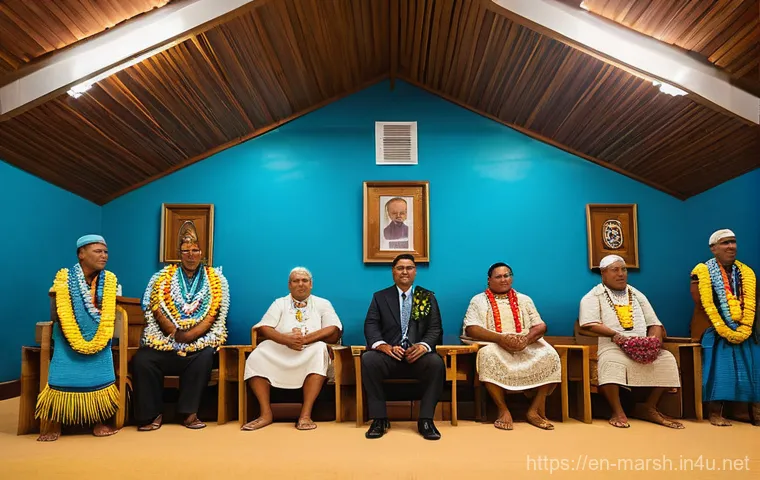
For the Marshall Islands, COFA brings a host of critical benefits, including substantial financial aid that supports various government services, infrastructure development, and education. This assistance is absolutely vital for a small island economy. Beyond the financial aspect, the U.S. defense umbrella provides a sense of security that would otherwise be impossible for such a small nation. On the flip side, the U.S. benefits from unrestricted access to strategic locations in the Pacific, which is invaluable for its defense posture. I’ve always found it fascinating how such a relationship fosters a unique shared destiny, where the responsibilities are clearly defined yet the impacts are far-reaching for both parties. It’s a partnership that requires continuous dialogue and understanding, ensuring that the evolving needs of both nations are met. This enduring connection highlights the intricate web of global politics and regional influence.
Challenges and Resilience: The Road Ahead for the Marshall Islands
Despite their incredible journey to independence and the unique stability offered by their political system and the COFA, the Marshall Islands faces a formidable array of challenges, particularly as a low-lying atoll nation. It’s easy to admire their past accomplishments, but it’s crucial to acknowledge the very real, existential threats they confront daily. When I think about their future, I’m often struck by the immense resilience and adaptive spirit of the Marshallese people, who have lived in harmony with their environment for centuries. However, the scale of current global challenges, especially environmental ones, is unprecedented. It requires not just local ingenuity but global cooperation and understanding. I’ve personally seen reports that paint a stark picture, yet the determination of the Marshallese leadership and community to find solutions and advocate for their survival is incredibly powerful. Their story isn’t just about politics; it’s about survival and the human spirit.
Climate Change: An Existential Threat
Without a doubt, climate change is the single greatest existential threat facing the Marshall Islands. As a nation composed almost entirely of low-lying coral atolls, rising sea levels and increased frequency of extreme weather events pose an immediate danger to their very existence. I’ve read countless articles and reports, and the scientific consensus is clear: entire islands could become uninhabitable within generations. This isn’t some abstract future problem; it’s a present reality that impacts freshwater sources, food security, and displaces communities. The Marshallese government has been a leading voice on the international stage, tirelessly advocating for stronger global action on climate change. It’s a fight for survival, one that they are bravely leading, and their unwavering advocacy resonates deeply with me, highlighting the urgent need for global solidarity and action to protect these vulnerable nations.
Economic Aspirations: Charting a Sustainable Future
Beyond climate change, the Marshall Islands is also grappling with the complexities of economic development and achieving a sustainable future. As a small island developing state, they face inherent limitations in terms of natural resources and market access. While financial assistance from COFA is vital, the long-term goal is to build a more diversified and self-reliant economy. I’ve seen their efforts to explore sustainable tourism, develop their fisheries, and even dabble in niche agricultural products. It’s a slow and arduous process, requiring innovative thinking and strategic investments. The challenge is to create opportunities for their growing population, reduce reliance on external aid, and build industries that are both economically viable and environmentally sound. It’s a delicate balancing act, but their determination to forge a prosperous and sustainable future for their people is truly inspiring.
Life on the Atolls: How Politics Touches Everyday Marshallese Life
It’s easy to talk about political systems and historical milestones in abstract terms, but what I find truly meaningful is understanding how these grand narratives actually play out in the daily lives of people. On the atolls of the Marshall Islands, the political decisions made in the capital, Majuro, directly shape everything from the quality of education available to children to the healthcare services provided to families. I remember reading a personal account from someone living on one of the outer islands, describing how government initiatives, or sometimes the lack thereof, could profoundly impact their community’s well-being. It’s a powerful reminder that governance isn’t just about high-level policy; it’s about real people, real struggles, and real progress. This direct connection between policy and daily life makes their political system incredibly relevant and personal to every Marshallese citizen, fostering a sense of community engagement that’s really quite special.
Education and Healthcare: Government’s Role
The government of the Marshall Islands plays a crucial role in providing essential services like education and healthcare, which are fundamental to the well-being and future of its citizens. Access to quality education, from primary schools on remote atolls to higher education opportunities, is a constant focus. I’ve always believed that investing in education is investing in the future, and for a developing nation, it’s absolutely paramount. Similarly, ensuring access to adequate healthcare, despite geographical challenges and limited resources, is a top priority. This includes everything from basic clinics on outer islands to more specialized medical facilities in the larger centers. It’s a constant balancing act for the government, striving to deliver these vital services across a dispersed population, often with the support and assistance provided through international partnerships like COFA. Their dedication to public welfare is evident in these crucial sectors.
Community and Custom: Preserving Identity
Beyond formal governance, the Marshallese political and social fabric is deeply intertwined with strong community ties and a profound respect for custom. This isn’t just about laws; it’s about the unwritten rules, the social expectations, and the communal support systems that have sustained their society for generations. I’ve learned that decisions made within families and communities often reflect a blend of traditional respect for elders and a consensus-based approach. The preservation of their unique cultural identity – through language, traditional crafts, navigation skills, and storytelling – is also implicitly supported by their political framework. The government often works to promote and protect these cultural assets, understanding that a nation’s strength lies not just in its economy or defense, but in the vibrant identity of its people. This commitment to cultural preservation is something truly remarkable and a testament to their enduring spirit.
Marshall Islands at a Glance: Key Political Features
To help paint a clearer picture of this fascinating nation, I’ve put together a quick overview of some of its core political and historical features. It’s a testament to how much they’ve achieved as a relatively young independent state, blending the old with the new in a truly unique way. Whenever I try to understand a country’s system, I find having these quick facts really helps to ground the more complex narratives. It’s like having a cheat sheet to grasp the fundamentals before diving into the nuances. This small but mighty nation has certainly packed a lot of history and innovation into its relatively brief modern history, showing incredible adaptability and a fierce desire for self-determination. I hope this table gives you a clear snapshot of their foundational structure and important milestones that have shaped their current political reality.
| Feature | Description |
|---|---|
| Type of Government | Parliamentary Republic with a unique blend of traditional authority. |
| Head of State & Government | President (elected by the Nitijela from among its members). |
| Legislative Body | Nitijela (unicameral parliament, elected by popular vote). |
| Traditional Influence | Council of Iroij (traditional chiefs) advises on customary law and land matters. |
| Independence | Self-governance in 1979; Full sovereignty in 1986 under the Compact of Free Association (COFA) with the U.S. |
| Key International Partner | United States (via COFA for defense and financial assistance). |
Navigating Geopolitical Waters: Alliances and Diplomacy
For a small island nation, the Marshall Islands has proven itself to be a remarkably astute player on the international stage. Their diplomacy isn’t just about maintaining existing relationships; it’s about actively forging new alliances and advocating for their unique perspective. I’ve always been impressed by their strong voice in international forums, particularly on issues that directly impact them, like climate change. They’re not afraid to speak truth to power and to call on larger nations to fulfill their responsibilities. Their relationship with the U.S. through COFA is undoubtedly central, but they also maintain diplomatic ties with a diverse range of countries, seeking partnerships that can support their development goals and amplify their global influence. It’s a proactive and strategic approach to foreign policy, ensuring that their interests are always represented and protected in a complex global environment.
Future Trajectories: Adaptability and Innovation
Looking ahead, the future of the Marshall Islands will undoubtedly be defined by its adaptability and its capacity for innovation. Facing unique challenges such as climate change and economic development on a limited resource base, the nation is constantly seeking creative solutions. I often think about the ingenuity required to sustain a vibrant society on such delicate atolls. This means exploring new technologies for renewable energy, developing resilient infrastructure, and fostering educational systems that prepare their youth for a rapidly changing world. The ability to blend traditional knowledge with modern advancements will be crucial. It’s a continuous journey of learning and evolving, and their proactive stance on global issues, particularly environmental ones, demonstrates a powerful commitment to not just surviving, but thriving in the years to come. Their story is a testament to unwavering human spirit and innovative governance.
Wrapping Up Our Journey
And there you have it, folks! Diving into the political heart of the Marshall Islands has been a truly eye-opening experience for me, reminding us all that the world is full of incredible, resilient nations. It’s a testament to their strength and adaptability, beautifully blending ancient traditions with the demands of modern democracy. I truly hope this peek into their unique governance has given you as much appreciation for their journey as it has given me. What an inspiring example of a nation charting its own course, come what may.
Handy Facts to Keep in Mind
1. The Marshall Islands operates as a parliamentary republic, meaning their President is elected by members of their parliament, the Nitijela.
2. Traditional chiefs, known as Iroij, hold significant, respected influence, particularly concerning land rights and customary law, truly bridging past and present.
3. Their full sovereignty was achieved in 1986 through the Compact of Free Association (COFA) with the United States, a unique partnership providing defense and financial assistance.
4. Climate change poses an existential threat to this low-lying nation, making them a leading voice in global climate advocacy and a poignant example of environmental vulnerability.
5. The Nitijela is their unicameral legislature, serving as the primary law-making body and the crucial platform for democratic representation across the atolls.
Summing Up: Key Takeaways
What I really want you to take away from our exploration of the Marshall Islands’ political system is its remarkable blend of tradition and modernity, a true testament to the resilience and foresight of its people. They’ve successfully integrated centuries-old customs with contemporary democratic structures, creating a stable and deeply rooted form of governance. While facing monumental challenges, especially from climate change, their unwavering spirit and strategic international partnerships, like COFA, demonstrate a powerful commitment to their future. It’s a truly unique story of self-determination, cultural preservation, and ongoing adaptation on the global stage, proving that even the smallest nations can hold immense political wisdom and influence.
Frequently Asked Questions (FAQ) 📖
Q: How exactly did the Marshall Islands achieve their independence, and what’s this “Compact of Free
A: ssociation” that’s so central to their story? A1: Oh, that’s such a fascinating journey, and honestly, it’s not as straightforward as just one big declaration.
I remember diving into their history and realizing it was a gradual process, very much shaped by their relationship with the United States after World War II.
The U.S. had administered the islands as part of the UN Trust Territory of the Pacific. So, the first big step was in May 1979, when the Marshall Islands adopted their own constitution and became self-governing.
That’s when they really started steering their own ship, so to speak. But the full, undeniable sovereignty – that came in October 1986, with the implementation of the Compact of Free Association, or COFA, with the U.S..
Now, the COFA itself is a truly unique agreement! Think of it as a special partnership. Under it, the Marshall Islands became a fully sovereign nation, free to conduct its own affairs, but with the U.S.
taking on the responsibility for its defense and security. In exchange, the U.S. gets exclusive military access to a pretty strategic area in the Indo-Pacific, which includes the important missile test range at Kwajalein Atoll.
But it’s not just about defense; the U.S. also provides substantial financial assistance, which has been a huge part of the Marshallese economy over the years.
And here’s a detail I always find intriguing: Marshallese citizens can live, work, and study in the United States without a visa, and they even join the U.S.
military at a higher rate than any U.S. state. It’s a multi-faceted relationship that definitely impacts daily life on both sides!
The Compact has been renewed several times, most recently in March 2024, ensuring this special bond continues for another two decades. It’s really the bedrock of their modern nationhood.
Q: With a modern parliamentary republic, how do traditional chiefs, or Iroij, still fit into the Marshall Islands’ political system? It sounds like a delicate balance!
A: You’ve hit on one of the most captivating aspects of Marshallese governance! When I first learned about it, I was so intrigued by how they seamlessly weave ancient wisdom with contemporary democracy.
It’s truly a testament to their culture’s resilience. While they operate as a unitary parliamentary republic, with a democratically elected Nitijela (that’s their parliament, by the way), traditional chiefs, known as Iroij, definitely aren’t sidelined.
They hold a significant advisory role through what’s called the Council of Iroij. This council is a consultative upper house, meaning they advise on all matters relating to customary law and traditional practices.
Imagine having a panel of revered elders whose deep understanding of cultural heritage helps guide national decisions – it really makes sure that modern laws don’t inadvertently disrespect centuries-old traditions.
The constitution even allows the Nitijela to codify traditional law, but if they don’t, the parliament is actually constrained to act consistently with traditional law as defined by these leaders.
It’s not just a symbolic role; it’s a living, breathing part of their governance that reflects the enduring respect for their indigenous leadership. In fact, it’s been said that for quite some time after independence, the first two presidents were even chiefs themselves, showing just how deeply intertwined these roles were.
It’s a beautiful way to maintain cultural identity while embracing modern political structures.
Q: What have been some of the biggest challenges this unique political system has faced since independence, and how have they navigated them?
A: Navigating a relatively new democratic system, especially one that blends traditional customs with modern governance, naturally comes with its own set of hurdles.
From what I’ve observed and read, the Marshall Islands has certainly faced its share of complexities. One persistent challenge, which honestly isn’t unique to them but is certainly impactful, has been issues surrounding corruption, particularly when it comes to the allocation of foreign aid and government contracts.
It’s a tough balancing act for any small nation reliant on external support to ensure transparency and accountability. Another area that’s seen some turbulence is political stability.
Their system, where the President is elected by members of the Nitijela from among themselves, can sometimes lead to a bit of political jostling. There have been instances where governments face no-confidence votes, leading to shifts in leadership.
This kind of fluidity, as I’ve seen in other small island nations, can sometimes make it tricky to implement long-term policies when politicians are constantly trying to shore up support.
It can mean that cabinet selections, for example, might be driven more by political alliances rather than solely by practical expertise, which can diminish the President’s overall power to lead effectively.
Beyond internal politics, the Marshall Islands also grapples with the enduring legacy of the U.S. nuclear testing program from decades ago, which continues to be a point of discussion, especially during COFA negotiations.
Despite these challenges, what I truly admire is the resilience of the Marshallese people and their commitment to their democratic processes and cultural heritage.
They’ve shown a remarkable ability to adapt and continue striving for what’s best for their islands, even when the path gets a little rocky.

